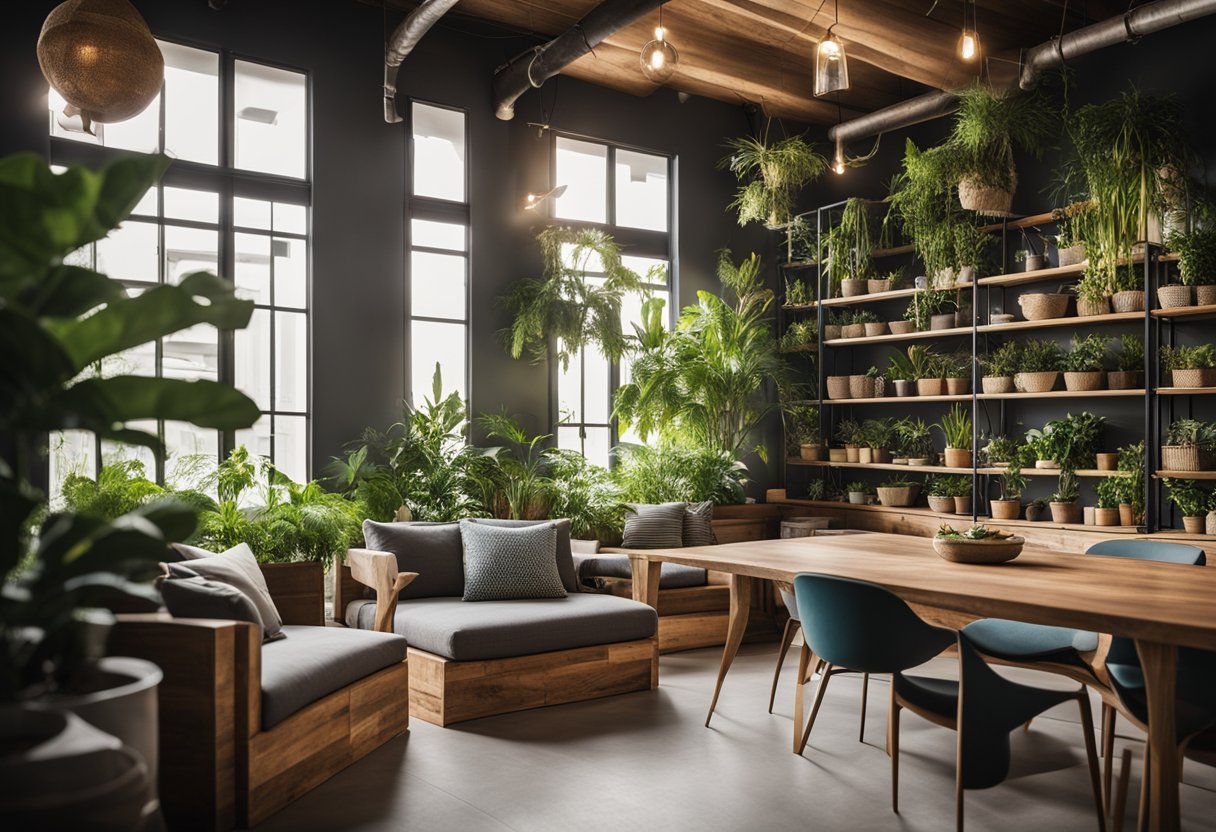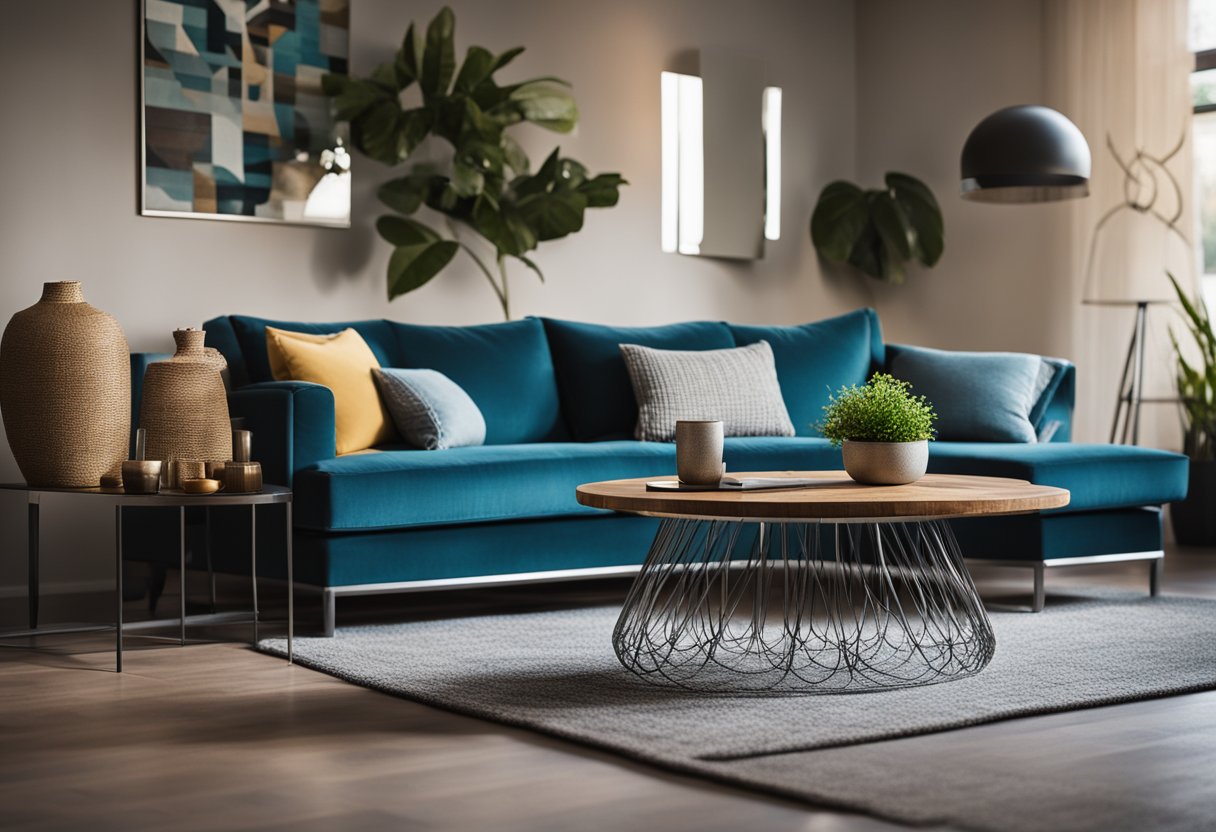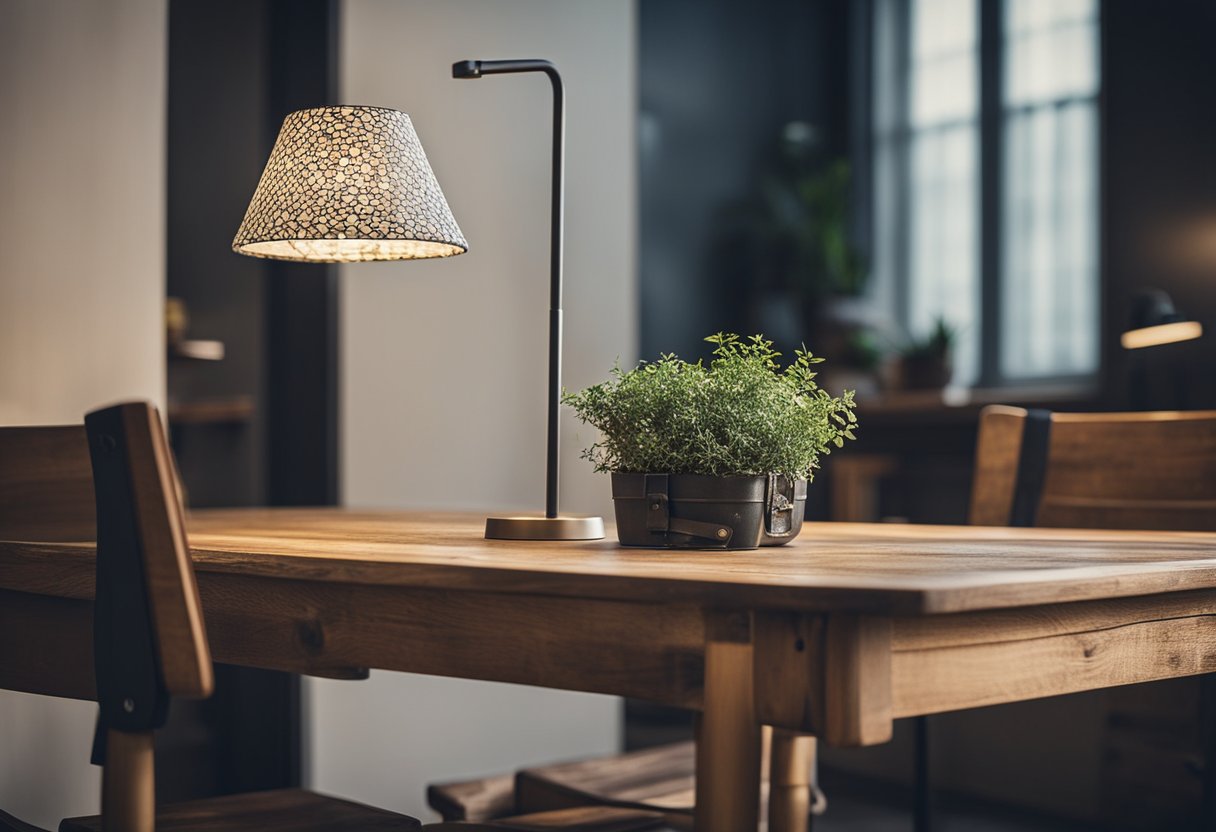Recycled Materials for Interior Design: Sustainable and Stylish Solutions
If you’re looking to update your home or office space, consider incorporating recycled materials into your interior design. Not only is this a sustainable choice, but it can also add unique character and charm to your space. There are a variety of recycled materials that can be used in interior design, from reclaimed wood to recycled glass and metal.

Sustainable materials and practices are becoming increasingly important in interior design. By using recycled materials, you can help reduce waste and promote a more sustainable future. Additionally, upcycling and recycling materials can be a cost-effective way to create a one-of-a-kind space. Whether you’re looking to add a rustic touch with reclaimed wood or a modern flair with recycled glass, there are endless possibilities when it comes to incorporating recycled materials into your interior design.
Design aesthetics and recycled materials can go hand in hand. In fact, many architects and designers are now using recycled materials as a way to add unique textures and patterns to their designs. Whether you’re going for a minimalist look or a more eclectic feel, recycled materials can be used to create a variety of design styles. So why not consider incorporating recycled materials into your next interior design project? It’s a sustainable and stylish choice that’s sure to make a statement.
Key Takeaways
- Using recycled materials in interior design is a sustainable choice that can add character to your space.
- Recycled materials can be a cost-effective way to create a unique and one-of-a-kind design.
- Recycled materials can be used to create a variety of design styles, from rustic to modern.
Sustainable Materials and Practices in Interior Design

When it comes to interior design, sustainability is becoming an increasingly important consideration. By incorporating sustainable materials and practices, you can reduce your carbon footprint, save money, and create a healthier indoor environment. Here are some of the most exciting sustainable materials and practices in interior design:
Recycled Materials in Furniture and Finishes
Recycled materials such as reclaimed wood, recycled plastic, and upcycled materials can be used to create unique and eco-friendly furniture and finishes. These materials not only reduce waste but also add character and charm to your space.
Eco-Friendly Insulation and Building Materials
Insulation and building materials made from recycled paper, cork, and bamboo are sustainable alternatives to traditional materials. They are not only eco-friendly but also provide excellent insulation and soundproofing.
Innovative Use of Recycled Elements
Designers are finding innovative ways to incorporate recycled elements into their designs. For example, mushroom materials can be used to create eco-friendly furniture and biodegradable packaging.
Energy Efficiency and Environmental Impact
Energy-efficient lighting, appliances, and HVAC systems can significantly reduce your carbon footprint and lower your utility bills. Choosing sustainable materials such as natural light, VOC-free paints, and easy-to-clean surfaces can also improve your indoor environment.
Designing for Sustainability and Functionality
Sustainable design is not just about using eco-friendly materials but also designing for functionality and longevity. By choosing durable materials and designing for flexibility, you can reduce waste and extend the lifespan of your space.
The Circular Economy in Interior Design
The circular economy is a system that aims to eliminate waste and keep resources in use for as long as possible. In interior design, this means using post-consumer and completely recyclable materials and designing for disassembly and reuse.
Enhancing Atmosphere with Sustainable Choices
Sustainable materials such as natural wood, stone, and terrazzo can create a warm and inviting atmosphere in your space. Choosing sustainable lighting and blinds can also enhance the ambiance while reducing your carbon footprint.
Cost-Effective Sustainable Solutions
Sustainable materials and practices can be cost-effective in the long run. By reducing your energy bills and maintenance costs, you can save money while creating a healthier and more sustainable indoor environment.
Sustainable Appliance and Accessory Selection
Choosing energy-efficient appliances and sustainable accessories such as recycled glass and upcycled or repurposed materials can further enhance the sustainability of your space.
The Role of Natural Light in Sustainable Design
Natural light not only enhances the aesthetics of your space but also reduces your energy consumption. By maximising natural light and choosing sustainable lighting solutions, you can create a healthier and more sustainable indoor environment.
Minimising Carbon Footprint through Design Choices
Design choices such as choosing sustainable materials, reducing waste, and designing for energy efficiency can significantly reduce your carbon footprint and contribute to a more sustainable future.
Social Impact of Sustainable Interior Design
Sustainable interior design can also have a positive social impact. By choosing sustainable materials and supporting sustainable practices, you can contribute to a more sustainable and equitable future.
Recycling and Upcycling in DIY Interior Projects
Recycling and upcycling materials in DIY interior projects can be a fun and creative way to incorporate sustainable design into your space. Materials such as recycled cardboard, linen, and cotton can be used to create unique and eco-friendly furniture and accessories.
Materials Lifecycle and Recyclability
Understanding the lifecycle and recyclability of materials can help you make informed choices when it comes to sustainable interior design. Choosing materials that are biodegradable, recyclable, and made from sustainable forests can significantly reduce your environmental impact.
Regulations and Certifications for Sustainable Materials
There are various regulations and certifications for sustainable materials in interior design. These include certifications for sustainable wood, recycled content, and indoor air quality. By choosing certified sustainable materials, you can ensure that your space is both eco-friendly and healthy.
Incorporating sustainable materials and practices into your interior design can be an exciting and rewarding journey. By making informed choices and designing for sustainability and functionality, you can create a healthier, more sustainable, and more beautiful space.
Design Aesthetics and Recycled Materials

Recycled materials are a fantastic choice for interior design as they not only help the environment but can also add a unique and stylish touch to your space. Here are some ways you can incorporate recycled elements into your design aesthetic.
Creating Visual Appeal with Recycled Elements
Recycled materials can be used to create stunning visual appeal in any space. Upcycled materials such as recycled glass and terrazzo can be used to create stunning feature walls, countertops, and even flooring. Recycled wood and stone can be incorporated into furniture pieces or used as accent pieces to add texture and depth to your space.
Texture and Colour in Recycled Material Selection
Texture and colour are important considerations when selecting recycled materials for your interior design project. Cork, bamboo, and recycled plastic can add interesting textures to your space, while recycled glass and terrazzo can provide a pop of colour. These materials can be used in a variety of ways, from flooring and wall cladding to furniture and lighting.
Integrating Recycled Materials in Modern Aesthetics
Recycled materials can be seamlessly integrated into modern aesthetics. Sustainable interior design is all about creating a space that is environmentally friendly and stylish. Modern architecture and finishes can be combined with recycled materials to create a unique and sustainable space.
Furniture Pieces and Art from Recycled Sources
Recycled materials can also be used to create stunning furniture pieces and art. Upcycled materials such as recycled wood and plastic can be used to create unique and stylish furniture pieces that are both functional and sustainable. Art made from recycled materials can also add a unique touch to your space.
Incorporating Natural Materials for Authenticity
Natural materials such as stone, wood, and bamboo can be incorporated into your design to add authenticity and warmth to your space. These materials can be used in a variety of ways, from flooring and wall cladding to furniture and lighting.
Customising Spaces with Recycled Partitions and Slabs
Recycled partitions and slabs can be used to customise your space and create unique design features. Recycled glass and stone can be used to create stunning partitions, while upcycled materials can be used to create custom slabs for flooring and countertops.
Innovative Surface Treatments with Recycled Products
Innovative surface treatments can be achieved using recycled products. Recycled glass and stone can be used to create stunning surface treatments, while upcycled materials can be used to create unique and sustainable finishes.
Lighting Solutions Using Recycled and Repurposed Items
Lighting solutions can also be achieved using recycled and repurposed items. Upcycled materials such as recycled glass and metal can be used to create stunning lighting fixtures that are both functional and stylish.
Blinds and Window Treatments from Sustainable Fibres
Blinds and window treatments can also be made from sustainable fibres such as bamboo and recycled materials. These materials can be used to create unique and stylish window treatments that are both functional and sustainable.
Selecting Easy-to-Clean Materials for Busy Spaces
Selecting easy-to-clean materials is important for busy spaces. Recycled materials such as cork and bamboo can be used to create flooring that is both easy to clean and sustainable.
The Impact of Colour and Material on Indoor Atmosphere
The impact of colour and material on indoor atmosphere is an important consideration when selecting recycled and sustainable materials for your interior design project. Choosing materials that are both sustainable and visually appealing can help create a welcoming and relaxing atmosphere.
Durability and Longevity of Recycled Design Elements
Durability and longevity are important considerations when selecting recycled design elements. Recycled materials such as stone and wood are not only sustainable but also durable, making them a great choice for high-traffic areas.
Frequently Asked Questions

What are the top eco-friendly materials revolutionising interior design?
As sustainability becomes an increasingly important consideration in interior design, eco-friendly materials are gaining popularity. Some of the top eco-friendly materials revolutionising interior design include recycled glass, reclaimed wood, bamboo, and cork. These materials are not only sustainable, but they also add unique textures and character to interior spaces.
How can upcycled elements be incorporated into modern home decor?
Upcycling is the process of transforming waste materials into new products, and it’s a great way to incorporate sustainable elements into modern home decor. Upcycled elements can be incorporated in a variety of ways, such as using reclaimed wood for furniture or decor, repurposing old textiles for upholstery or curtains, or using recycled glass for lighting fixtures.
Why are interior designers turning to sustainable materials in their projects?
Interior designers are turning to sustainable materials in their projects for a variety of reasons. Firstly, sustainable materials are better for the environment and help to reduce waste. Additionally, sustainable materials can add unique textures and character to interior spaces, making them more visually interesting. Finally, using sustainable materials can help to create a healthier indoor environment by reducing the amount of harmful chemicals and toxins in the air.
What innovative uses of recycled plastic are emerging in interior design?
Recycled plastic is a versatile material that can be used in a variety of innovative ways in interior design. For example, recycled plastic can be used to create furniture, lighting fixtures, and even wall coverings. Additionally, some designers are using recycled plastic to create 3D printed objects, which can be customised to fit the unique needs of a space.
Can you suggest creative ways to integrate zero waste practices in home styling?
Integrating zero waste practices in home styling can be a fun and creative challenge. Some ideas for integrating zero waste practices include using vintage or second-hand furniture, repurposing old textiles for cushions or curtains, and using natural materials like bamboo or cork. Additionally, you can reduce waste by choosing products with minimal packaging or by using refillable containers for cleaning products.
Who are the leading designers championing the use of recycled materials in their work?
There are many designers who are championing the use of recycled materials in their work. Some of the leading designers in this field include Tom Dixon, who has created a line of furniture made from recycled materials, and Piet Hein Eek, who is known for his use of reclaimed wood in his furniture designs. Additionally, companies like Emeco and Vitra are known for their commitment to sustainability and their use of recycled materials in their products.



